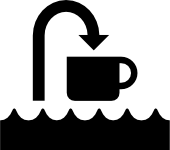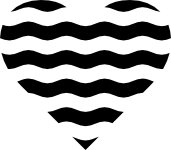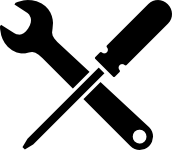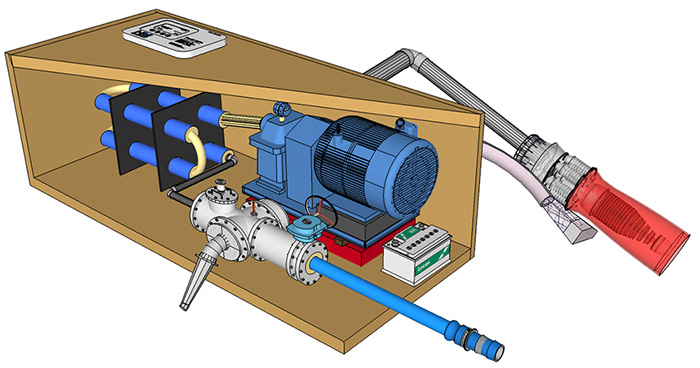Tip: Hover a component to view it's description here.
-
Hydro-Kinetic Turbine
Kinetic energy from the running river is captured by the hydro-kinetic turbine and turned into useful electrical energy in the generator.
-
Hose leading to Water Pump
The hose is connected to a large sediment filter and guides the water into the filtration system.
-
Large Sediment Filter
This stage removes most large particles above 5mm in diameter and prevents sediments from clogging up the circulation system. There will also be an activated carbon filter which removes organic chemicals. The filter in place is designed to be easily replaceable.
-
12V Generator
The generator is directly connected to the turbine. It is designed to output 12V at 200W, in order to power our entire system.
-
Water Pump
The water pump provides the water pressure necessary for circulation. Once activated, the pump will force untreated river water at high pressure through the reverse osmosis membrane tubes.
-
Reverse Osmosis Membrane Tubes
The reverse osmosis tube contains rolls of membranes which removes most impurities from the river water.
-
Ultraviolet Light Sanitization Unit
Clean water which flows from the tube are additionally sanitized by the ultraviolet lamp to remove any unfiltered viruses or bacteria.
-
Battery Box
The battery box stores the electricity produced and also contains a circuit which regulates the power and voltage of our entire system.
-
Data Collection Module
The data module continually tracks the overall rates of power and water generation. It can be programmed to indicate a full water tank, or warn the user when the filters require replacement. It can also connect several of our devices in a mesh network, gathering data in order to optimize the placement of our devices.
-
Foldable Steel Arm for Easy Stowaway
The hydro-kinetic turbine and power generator is attached to the box via a foldable steel arm which can be adjusted to fit the water level in the river.
-
Clean Water Outlet
A storage device can be attached to this outlet to collect the treated river water.We estimate around 700 litres of water to be produced a day.
-
Waste Water Outlet
Not all of the water is successfully forced through the reverse osmosis membranes, and the remaining waste water is expelled through a pipe back into the river.



